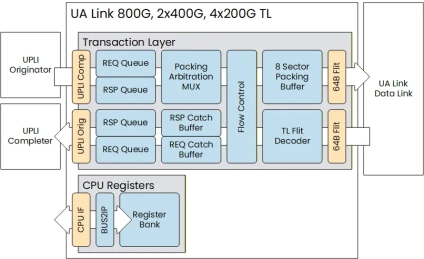Alphawave IP IP
Filter
Compare
10,093
IP
from
391
vendors
(1
-
10)
-
UCIe IP
- Supporting x16 link width with speeds up to 16 GT/s per lane, it conforms to UCIe’s standardized interface for seamless chiplet integration.
- Developed on GlobalFoundries 12LP+, this IP includes custom PHY, protocol, and die-to-die layers—engineered for performance, flexibility, and low latency.
-
HBM4 PHY IP
- Supports JEDEC HBM4 DRAMs
- Supports data rates up to 12 Gbps
- Supports up to 32 independent 64-bit memory channels
- Pseudo-channel operation supported to enable up to 64 32-bit pseudo-channels with 2048-bit PHY
-
HBM4 Controller IP
- Supports JEDEC standard HB4 DRAM
- DFI 5.1 compliant interface to HBM4 PHY
- Multiport Arm® AMBA® interface (AXI™) with managed QoS per pseudo-channel or single-port host interface(HIF), per channel
- Data rate support 12 Gbps or higher
-
3.6Kbit EEPROM IP with configuration 28p8w16bit
- 130GF_EEPROM_08 IP is a nonvolatile electrically erasable programmable read-only memory (EEPROM) with volume 3.6 Kbits, which is organized as 28 pages of 8 words by 16 bit with single-bit output data and parallel write data.
- Data programming in EEPROM consists of 2 consecutive phases - erasing and writing.
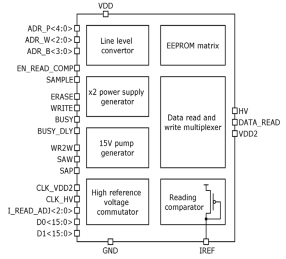
-
SLVS-EC RX PHY IP
- Fully compliant with SLVS-EC v3.0 specification.
- Supports both synchronous and asynchronous clocking.
- Up to 10Gbps per lane with 40-bit parallel data bus.
- Maximum output clock frequency of 250MHz.
-
Ethernet PHY IP
- Compliant to 802.3 Ethernet specification - 200GBASE-KR4, 200GBASE-CR4, 100GBASE-KR4, 100GBASE-CR4, 100GBASE-KR2, 100GBASE-CR2, 50GBASE-KR, 50GBASE-CR, 40GBASE-KR4, 40GBASE-CR4, 25GBASE-KR, 25GBASE-CR, 10GBASE-KR, 10GBASE-CR
- Data rate supported - Ethernet: NRZ 3.125 - 26.5625Gb/s, PAM4 53.125Gb/s
- DSP-based architecture using high-performance ADC/DAC for RX/TX

-
1G BASE-T Ethernet Verification IP
- The 1G BASE-T Ethernet Verification IP provides deliverables an effective & efficient way to verify the components interfacing with the Ethernet interface of an IP or SoC.
- The 1G Ethernet VIP is fully compliant with the IEEE standard 802.3 specification.
- This VIP is lightweight with easy plug -and- play interface so that there is no hit on the design cycle time.
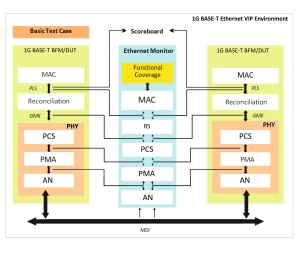
-
eFPGA IP — Flexible Reconfigurable Logic Acceleration Core
- RapidFlex eFPGA IP provides a reconfigurable, upgradeable, and iterative logic computing layer for SoCs, MCUs, AI accelerators, industrial control, and communication chips.
- Based on RapidFlex's self-developed ArkAngel® toolchain (AAEE), our eFPGA core delivers full-flow capabilities from architecture exploration → RTL → physical implementation (GDSII) → digital design flow verification, leading the industry in performance density, integrability, and toolchain experience.
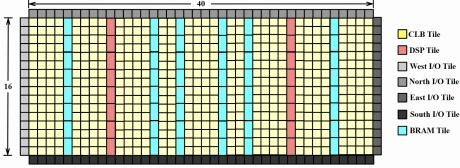
-
UCIe PHY (Die-to-Die) IP
- Compliant with UCIe v2.0, supporting 4/8/12/16/24/32GT/s data rates
- for Standard Package up to 16 lanes / for Advanced Package up to 64 lanes
- Provides a 1024-bit data bus width with high-throughput die-to-die communication
- Includes automatic per-lane calibration and optional transmitter de-emphasis
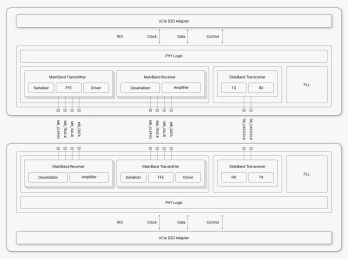
-
UA Link TL IP core
- UALink_200 Specifi cation Compliant: Implements TL functions per Rev 1.0
- Multi-Rate Support : 200 GBASE-KR1/CR1, 400 GBASE-KR2/CR2, 800 GBASE-KR4/CR4
- Atomic Operations, Authentication tags, Cache Synchronization, Flow Control
